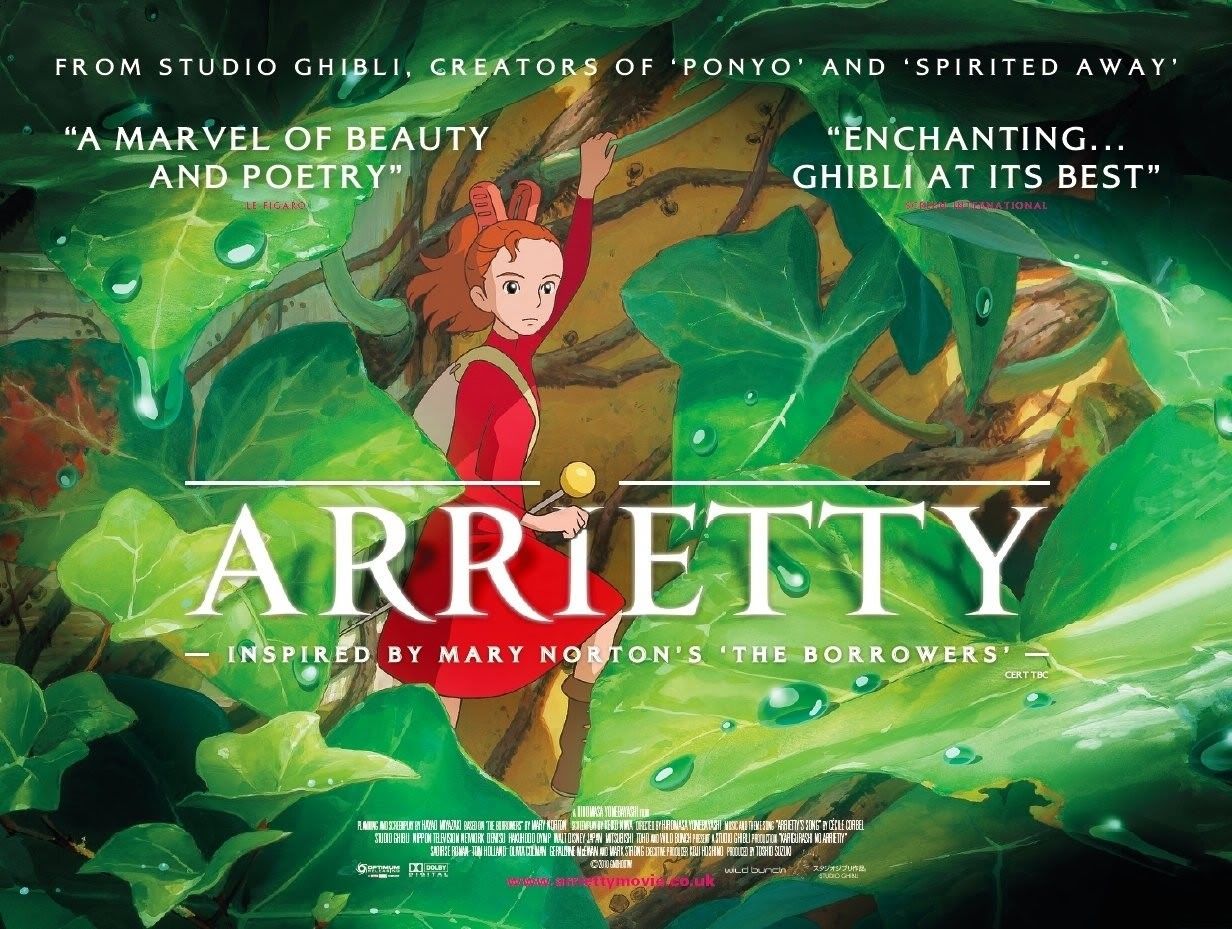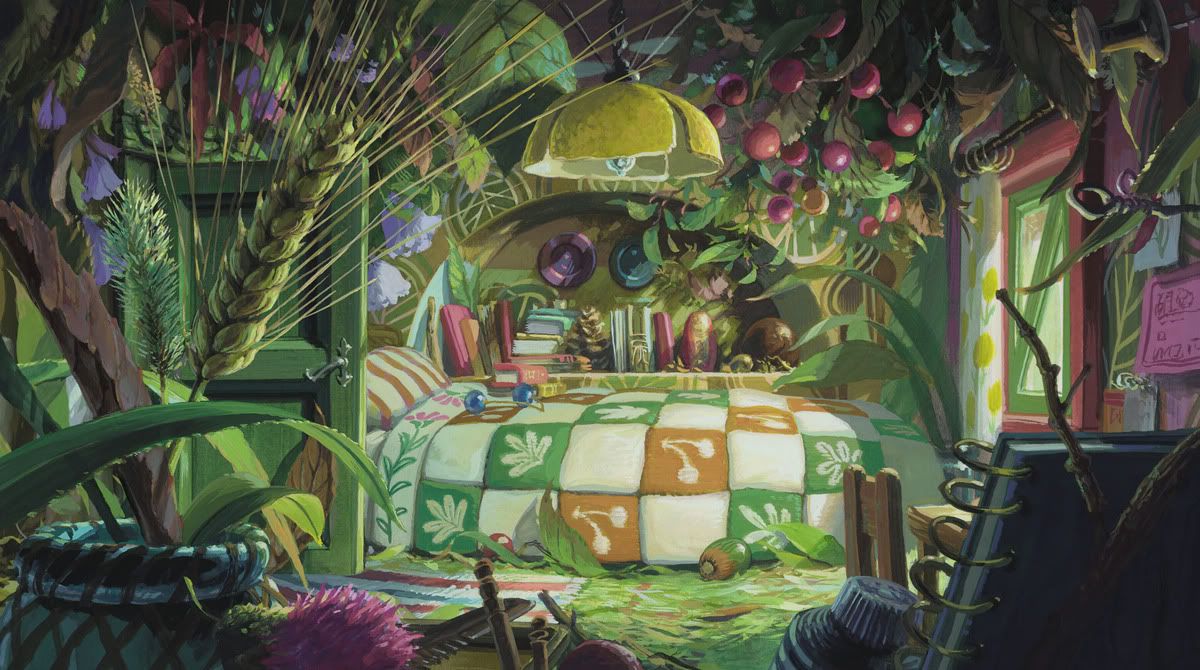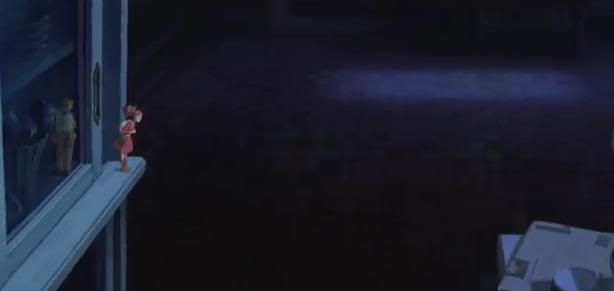 |
| Fig. 1 Arrietty poster. |
Arrietty was a visually beautiful film with a lot of heart and wonder for the mundane and everyday objects surrounding us. Every shot is a plethora of colour and life so vibrant that it becomes difficult to pay attention to the dialogue. The viewers eyes are constantly finding new and wonderful things to look at, which were made all the more ingenious when you realise who they belong to. The narrative is that of a family of miniature people, known as 'the borrowers'. Based on the book by English author, Mary Norton, the film follows Arrietty, a young girl that has just discovered the wonders of the human world in order to come of age.
 |
| Fig. 2 Arrietty's room. |
Arrietty is unlike her parents, she sees the human world as a new adventure filled with undiscovered treasures to reveal. One of the first things the audience learns about Studio Ghibli's newest heroine is her agility and confidence when faced with an opposing force. She is sprightly in her movement as well as personality, delighting in popping out and getting bits of plants to decorate her beautifully illustrated room. The very first living space the audience is introduced to is Arrietty's room (as seen in figure 1). Filled with luscious greens, pinks and oranges, it shows not only Arrietty's youth but her innocence too. She fills her room with flowers and berries of bright colours, which when contrasted to the rest of the much more practical house makes her seem even more charming and naive. Another aspect of her room is the scale of it. When she is in there you can see that her bed seems normal, but there are huge heads of wheat and berries the size of melons hanging from the ceiling. Alerting the audience to the reality of her size difference to the rest of the human world we know.
 |
| Fig. 3 Extreme scale difference. |
One of the strongest and most charming elements of this film is the use of scale throughout. The audience is lovingly introduced to the beauty of the giant size flowers and the huge leaves that protect Arrietty from the dangers around her. Not only is the scale used to make something visually appealling but it is also used to portray extreme differences in size. As Dan Jolin from Empire Magazine explained that Arrietty's first "‘borrowing’ is breathtakingly realised, both in terms of how Yonebayashi convincingly portrays the mundane as gargantuan and through some astonishing sound design, as what would be tiny taps and clicks to us boom resoundingly for the Clocks. One scene imbues a kitchen with a vastly cavernous, cathedral-like awesomeness, whose sheer faces (cupboard doors, table legs) are scaled nimbly by Arrietty and her father." (Jolin, 2011) As seen in figure 3, Arrietty is delicately standing on the edge of what would be the skirting on an average food cupboard for us, but to her it is the only thing between her safety and the sheer drop below. This cavernous kitchen echoes around the sounds that the audience would normally think nothing of, and makes them realise how dramatic they would actually be to someone so small.
Arrietty is a beautiful example of how 2D animation is still a stunning way of portraying animation as art while still portraying a lovable and charming story. After watching these 3 films from Japan; Akira, Paprika and now Arietty, it's a great insight into the various themes that are emerging from that nation. Akira contained themes from Japanese culture; youth that gone out of control and struggling to accept adulthood. They live in the shadow of the bomb but are too young to have felt any of the consequences, and thus feel even more estranged from the adults that do. Paprika, which is influence by the surrealer elements from western culture (especially Terry Gilliam), is a dream-like experience filled with vivid life and colour. Its themes are more international as it shows the consequences of virtual terrorism but focuses more on the visual experience than the narrative themes. Finally, Arrietty is a luscious animation that is entirely influenced by western culture. It is a lovely film with disney-like themes and visuals, focusing on the charm and wonder of a new undiscovered world.
List of Illustrations
Figure 1. Arrietty (2010) Arrietty poster. At: http://www.impawards.com/intl/japan/2010/karigurashi_no_arietti_ver2_xlg.html (Accessed on: )
Figure 2. Arrietty (2010) Arrietty's bedroom. At: http://alualuna.files.wordpress.com/2011/09/arrietty-9.jpg
Figure 3. Arrietty (2010) Extreme scale difference. At: http://genkinahito.files.wordpress.com/2011/08/arrietty-kitchen.jpg
Bibliography
Jolin, Dan (2011) Arrietty. In: Empire Online.com 25/7/11 [online] At: http://www.empireonline.com/reviews/reviewcomplete.asp?DVDID=118899 (Accessed on: 05/03/12)


No comments:
Post a Comment